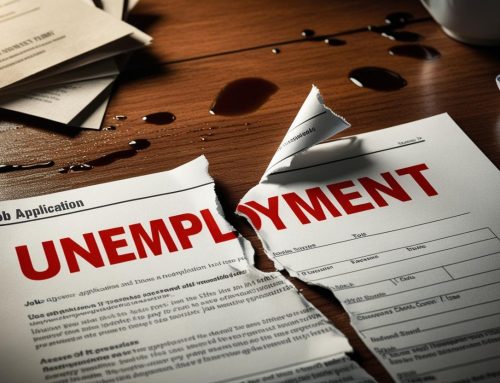September 28, 2022
The balance figure of the consumer confidence indicator (CCI) in Finland stood at -18.3 in September 2022, having been -14.9 in August and -15.9 in July. The September figure is the weakest in the measuring history 1995 to 2022. Last year in September, the CCI received the value 6.0. The long-term average for the CCI is -1.9. The data are based on Statistics Finland’s Consumer Confidence Survey, to which 1,003 persons resident in Finland responded between 1 and 18 September.
Consumer confidence in areas of residence and population groups
In September, consumer confidence in the economy was strongest in Greater Helsinki (CCI -12.4). Confidence was weakest in Eastern Finland (-23.3). Among population groups, upper-level salaried employees were the least pessimistic (-11.2). Pensioners clearly had the gloomiest expectations concerning economic development in September (-29.8). More detailed information is available in the figures and database tables.
Consumers’ own and Finland’s economy
In September, consumers’ views on their own economy weakened clearly compared to August and especially compared to last year’s September. Expectations concerning both one’s own and Finland’s economy in 12 months’ time were the gloomiest ever in the measuring history 1995 to 2022. Consumers’ assessments about their own and Finland economy at present were also very weak in September.
As many as 86 per cent of consumers thought in September that Finland’s economy was now worse than a year ago, and only three per cent saw it better. Twenty-nine per cent of consumers thought that their own economy is at the moment worse than one year ago. Slightly fewer, or 25 per cent of consumers considered their own economy stronger than one year ago in September.
In September, only 12 per cent of consumers believed that Finland’s economic situation would improve in the coming twelve months. More than one half, 61 per cent of consumers thought that the country’s economy would deteriorate. Only 19 per cent of consumers believed in September that their own economy would improve, while as many as 35 per cent feared it would worsen over the year.
Unemployment and its threat
Consumers’ expectations concerning the development of the general unemployment situation in Finland improved to a neutral level in September. Altogether 19 per cent of consumers expected that unemployment would decrease over the year, 39 per cent believed it would increase.
In September, employed consumers (wage and salary earners and self-employed persons) reckoned that their personal threat of unemployment or lay-off had remained unchanged and as high as the long-term average. Seven per cent of employed persons reckoned that their personal threat of unemployment had lessened over the past few months, while 16 per cent thought the risk had grown. On the other hand, one half, or 49 per cent of employed persons thought in September that they were not threatened by unemployment or temporary lay-off at all.
Inflation
In September, consumers’ estimates of inflation at the time of the survey and in 12 months continued to rise and were highest in the measuring history.
Consumers estimated in September that consumer prices have risen by 7.9 per cent from last year’s September and would go up by 6.7 per cent over the next year. Altogether 86 per cent of consumers thought consumer prices had risen much or fairly much over the year, and 66 per cent of them expected prices to rise at least at the same rate over the coming months as well.
Financial situation, saving and raising a loan
In September, the time was regarded very poor for taking out a loan and even for saving. Just 15 per cent of consumers regarded the time favourable for taking out a loan and only 37 per cent considered saving worthwhile. Nevertheless, intentions of raising a loan were unchanged from the long-term average among consumers. In September, 16 per cent of consumers were planning to take out a loan within one year.
Consumers continued to regard their own financial situation as good in September and their saving possibilities were expected to be average in the coming months. Sixty per cent of consumers had been able to lay aside some money and 72 per cent believed they would be able to do so during the next 12 months.
Spending and intentions to make large purchases
In September, the time was considered the worst ever for buying durable goods. Only 11 per cent of consumers thought the time was favourable for making expensive purchases.
Consumers’ intentions to spend money on durable goods in the next 12 months were record low in September. Intentions to make purchases fell from August and especially from one year ago. Just eight per cent of consumers planned on increasing and as many as one half, or 48 per cent on reducing their spending on durable goods over the next 12 months.
Consumers thought of buying a car in the next 12 months clearly less often in September than the long-term average. Intentions to buy a dwelling or build a house were also below average. In addition, plans for renovating one’s dwelling decreased in September to the long-term usual figures.
In September, only 12 per cent of consumers were either definitely or possibly going to buy a car during the next 12 months. Similarly, twelve per cent of consumers considered buying a dwelling. Seventeen per cent of consumers were planning to spend money on renovating their dwelling during the next 12 months.
Source: Statistics Finland
Legal Notice: The information in this article is intended for information purposes only. It is not intended for professional information purposes specific to a person or an institution. Every institution has different requirements because of its own circumstances even though they bear a resemblance to each other. Consequently, it is your interest to consult on an expert before taking a decision based on information stated in this article and putting into practice. Neither Karen Audit nor related person or institutions are not responsible for any damages or losses that might occur in consequence of the use of the information in this article by private or formal, real or legal person and institutions.






